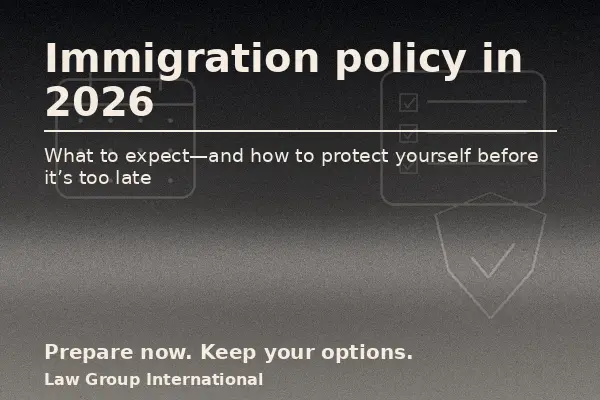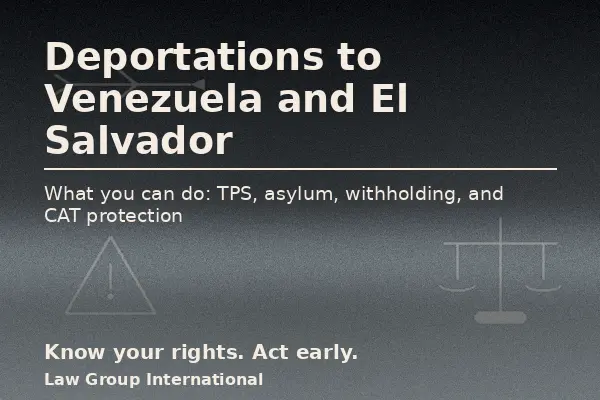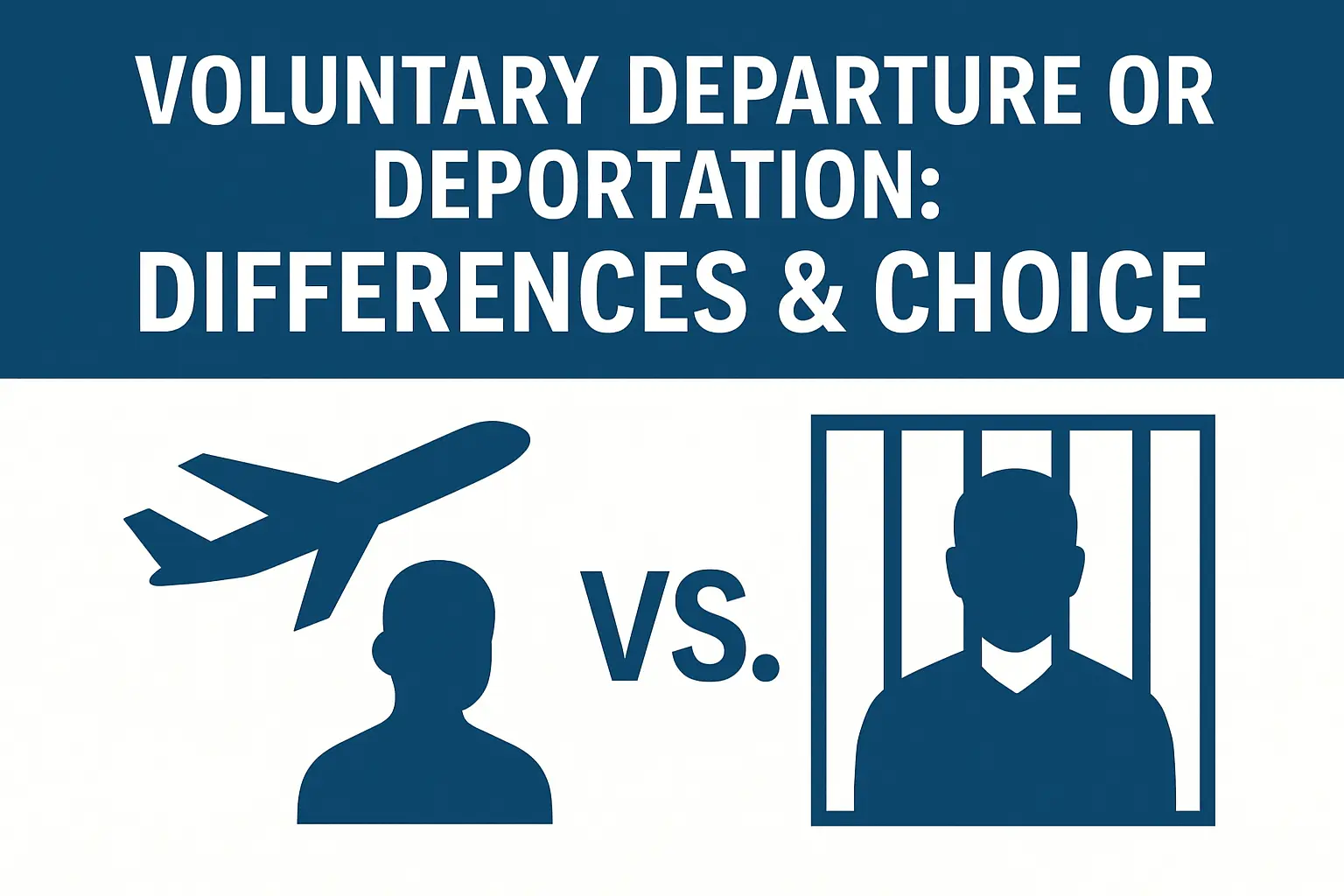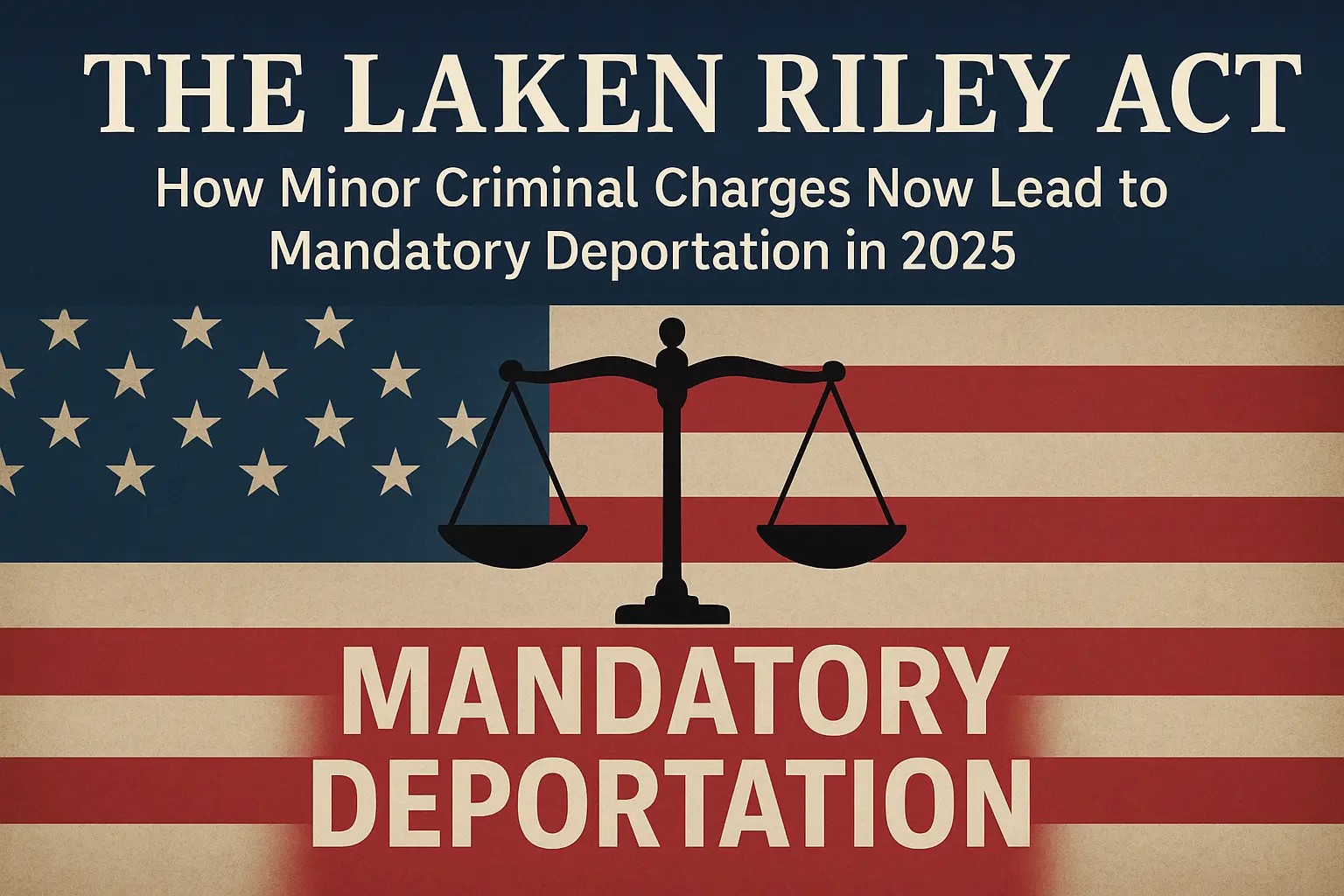Temporary Protected Status (TPS) in the U.S.: Requirements and Benefits
Temporary Protected Status (TPS) is a humanitarian immigration program that offers protection and stability to certain foreign nationals when conditions in their home countries make it unsafe to return. Whether the danger comes from armed conflict, environmental disasters, or other extraordinary circumstances, TPS allows eligible individuals to live and work in the United States for a set period of time, providing a lifeline when it’s needed most.
At Law Group International, we’ve helped countless clients secure TPS and maintain their status, guiding them through every application, renewal, and related immigration matter. In this article, we’ll explain what TPS is, who can qualify, how to apply or renew, and how it can interact with other immigration options.
What Is Temporary Protected Status?
Under U.S. immigration law, Temporary Protected Status allows nationals from countries designated by the U.S. government to remain in the United States for a temporary period if conditions in their home country prevent their safe return. You can review the official criteria and current list of designated countries on the USCIS TPS page and in the Federal Register.
Main benefits of TPS include:
- Protection from deportation while TPS is in effect
- Work authorization (via an Employment Authorization Document)
- Travel permission abroad with advance parole
If you believe you may qualify, visit our dedicated Temporary Protected Status page for personalized guidance.
Eligibility Requirements for TPS
While TPS is a valuable form of protection, eligibility is limited to individuals who meet strict requirements:
- Nationality – You must be a national of a country currently designated for TPS (or a stateless person who last habitually resided in such a country).
- Continuous Physical Presence – You must have been physically present in the U.S. since the effective date of your country’s TPS designation.
- Continuous Residence – You must have continuously resided in the U.S. since a date specified by the Department of Homeland Security (DHS).
- No Disqualifying Convictions – Certain criminal convictions or security-related grounds can make you ineligible.
For those whose home countries are dangerous due to persecution, TPS can sometimes be part of a broader legal strategy that includes asylum protection.
How to Apply for TPS
To apply for TPS, you’ll need to file the correct forms with U.S. Citizenship and Immigration Services (USCIS):
- Form I-821, Application for Temporary Protected Status – Required for all TPS applications.
- Form I-765, Application for Employment Authorization – Optional, but recommended if you want to work legally in the U.S.
Filing fees: USCIS charges a fee for TPS applications and EAD requests, though some applicants may qualify for a fee waiver.
Supporting documentation may include:
- Proof of identity and nationality (passport, birth certificate, or national ID)
- Evidence of continuous residence and physical presence (utility bills, lease agreements, employment records)
- Any prior immigration documentation
Applications must be sent to the USCIS lockbox address specified for TPS filings.
Renewal and Loss of TPS Status
TPS is temporary, meaning it must be renewed each time your country’s designation is extended by DHS. Renewal instructions and deadlines are published in the Federal Register and on USCIS’s TPS pages.
Common reasons TPS can be lost include:
- Failing to file your renewal application during the registration period
- Certain criminal convictions
- Departing the U.S. without travel authorization
TPS and Other Immigration Options
TPS does not automatically lead to permanent residency (a green card), but it can work alongside other immigration strategies. For example:
- Family-Based Green Cards – TPS holders may be able to adjust status through a qualifying family relationship. Learn more on our Family-Based Immigration page.
- Employment-Based Green Cards – In some cases, TPS beneficiaries with U.S. employers willing to sponsor them can transition to permanent residency.
- Other Humanitarian Relief – TPS can be combined with asylum, U visas, or certain waivers to overcome inadmissibility barriers.
FAQs – Temporary Protected Status (TPS)
Q1: What is Temporary Protected Status (TPS)?
TPS is a humanitarian program that allows eligible nationals from designated countries to live and work in the U.S. temporarily when conditions in their home country are unsafe due to war, disasters, or other crises.
Q2: Who is eligible for TPS?
You must be a national of a TPS-designated country, meet continuous residence and physical presence requirements, and have no disqualifying convictions.
Q3: How do I apply for TPS?
You must file Form I-821 with USCIS, include evidence of your eligibility, and optionally file Form I-765 for work authorization.
Q4: Can I get a green card if I have TPS?
Not directly through TPS, but you may qualify for a green card via family, employment, or other immigration relief if you meet the requirements.
Q5: How often do I need to renew TPS?
Each time DHS extends your country’s designation. Renewal periods are announced by USCIS and in the Federal Register.
Protect Your Rights with Experienced Legal Guidance
Temporary Protected Status can be a crucial safeguard for you and your family if returning to your home country is unsafe. But TPS has strict requirements and deadlines—missing even one can result in losing your protection.
At Law Group International, we have decades of combined experience helping immigrants from TPS-designated countries apply successfully, renew on time, and explore long-term immigration solutions.
Schedule a consultation today to confirm your eligibility, prepare your application, and protect your right to remain in the United States.
Explore More Immigration Topics
Immigration Policy in 2026
January 1, 2026
Deportations to Venezuela and El Salvador
December 31, 2025
Religious Persecution Asylum
December 30, 2025
Northern Virginia Immigration Court
December 20, 2025
Federal Court Blocks Expanded Rapid Deportations
December 16, 2025
What to Do If ICE Comes to Your Door
December 14, 2025
Voluntary Departure vs. Deportation
December 12, 2025
What expedited removal means
November 19, 2025










